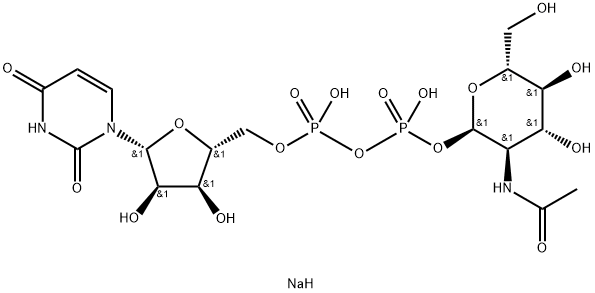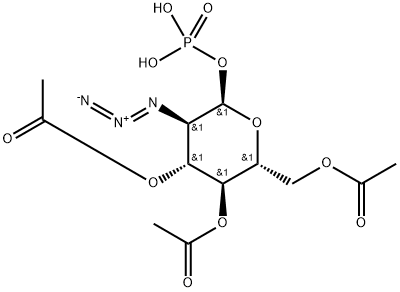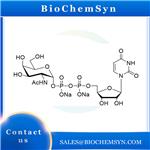Chemical Properties
White to off-white crystalline powder
Uses
Uridine 5′-diphospho-N-acetylglucosamine (UDP-GlcNAc) sodium salt has been used:
- as a component of reaction cocktail in endoplasmic reticulum to Golgi transport assay
- as a reference standard for the quantification of UDP-GlcNAc in liver tissues using high-performance liquid chromatography (HPLC)
- in testing the glycosylation activity of O-GlcNAc transferase (OGT) against peptide substrate
Uses
GlcNAc transferase substrate
Uses
Uridine-5'-diphospho-N-acetylglucosamine sodium salt is used as a chemical reagent in studies relating to the synthesis of immunogens.
General Description
Uridine 5′-diphospho-N-acetylglucosamine (UDP-GlcNAc) is a nucleotide sugar. It is synthesized from glucose via the hexosamine biosynthetic pathway (HBP). UDP-GlcNAc is transported actively into Golgi, nucleotide sugar transporter (NST). The levels of UDP-GlcNAc is modulated by the concentration of nutrients exposed to the cell.
Biochem/physiol Actions
Uridine 5′-diphospho-N-acetylglucosamine (UDP-GlcNAc) is a sugar donor and aids in the endomembrane glycosylation of endoplasmic reticulum and Golgi. The decreased levels of UDP-GlcNAc has an influence on the normal cellular proliferation and apoptosis. UDP-GlcNAc elicits feedback inhibition of the enzyme glutamine:fructose-6-phosphate amidotransferase (GFAT).





